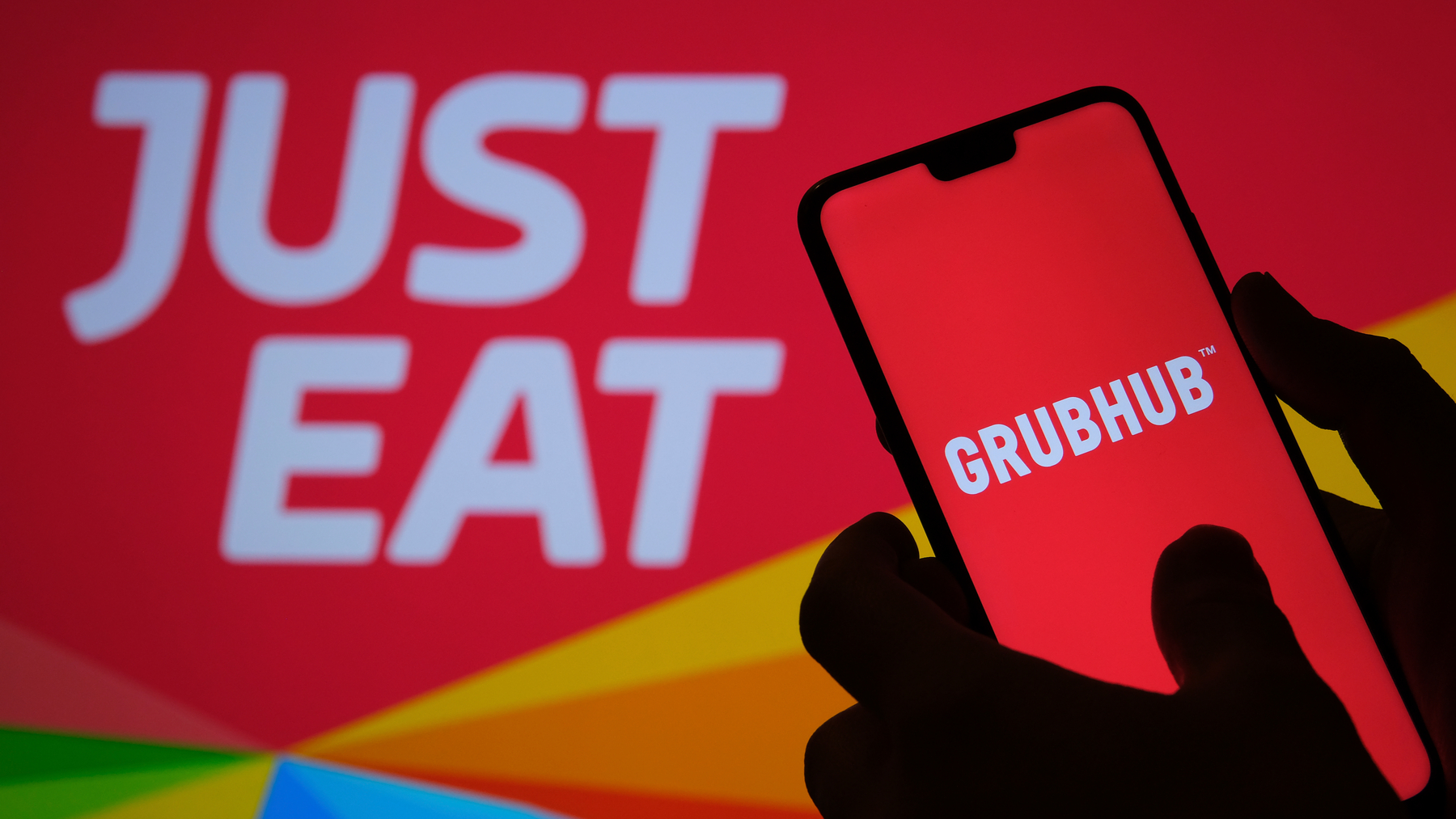Pandemic-induced lockdowns turbocharged consumer cravings for restaurant meals at home, which in turn has fuelled the rapid growth of online food delivery companies.
Despite this surge in popularity, there are signs of a market slowdown. This uncertainty is encapsulated by the plight of Just Eat Takeaway, the multinational online food delivery service. Last quarter, it reported a drop in sales of around 1%. Not long after, shareholders began expressing serious concern over the future of the company.
In response, the company has proposed selling its US-based food delivery platform Grubhub – despite acquiring it just one year ago for an eye-watering $7.3bn (£5.8bn).
And now, Just Eat Takeaway’s market cap stands at just over $5bn – less than the price it paid for Grubhub and a 76% drop from June 2020, the month it first announced the Grubhub acquisition.
The proposed sell-off raises questions about the wider stability of the online food delivery market, and how a company can go from ordering a $7bn acquisition to sending it back to the kitchen unsatisfied.
One important factor is the timeline of events. Just Eat Takeaway finalised its acquisition of Grubhub last year, but the initial deal was announced in 2020 – during the height of the pandemic.
Post-pandemic drop off
From Deliveroo to Uber Eats, online food delivery companies saw their business boom during Covid-enforced lockdown periods, which shuttered restaurants and changed consumer habits en-masse.
These companies thrived like never before. By revenue, Uber Eats became a larger business than its core ride-hailing service.
But amid the tacos enjoyed on the sofa and dim sum delivered to doorsteps, questions lingered about the sustainability of that growth.
A common theme emerged among online food delivery firms during the pandemic: soaring revenues that struggled to become profits.
This is in part due to the low-margin nature of online food delivery. But companies also aggressively spent on marketing and expansion, seeing an opportunity to capitalise on changing consumer habits.
Yet companies have struggled to convert those soaring revenues to profitability. Some analysts have asked: if online food delivery firms can’t turn a profit when people are legally unable to go to restaurants, when can they?
Deliveroo’a lacklustre IPO last year suggests investors are not fully convinced. The London-headquartered company saw its adjusted losses before tax widen from £11m in 2020 to £131m in 2021.
And with restaurants in the UK and most of the world back to business as usual, there are signs that consumers are cutting the amount they spend on food deliveries.
“The global food delivery industry has experienced a slowdown in demand compared to pandemic highs, as more consumers have returned to eating in-person,” Nick Katzaroff, a research analyst at Similarweb told UKTN.
Similarweb has been monitoring the online search trends of online food delivery, and its data shows significantly slower growth and even drops, depending on the region.
Price pain
Food delivery companies now face a fresh threat: a cost of living crisis and soaring inflation.
“There are a number of barriers that hinder the success of online delivery services,” Ramsey Baghdadi, an associate analyst at research firm GlobalData, told UKTN. “The main one being price.”
The global economy has been pummelled by the double blow of the Covid-19 pandemic followed by the war in Ukraine. This has led to soaring inflation and a cost of living crisis in the UK, which means consumers are not necessarily in the position to pay premium fees for food.
“Given the current economic uncertainty, there are a sizeable number of people that are influenced by price, and for those with lower disposable income, it is the backbone to their purchasing decisions,” Baghdadi said.
GlobalData’s own research during Q1 of 2022 found that “over half of consumers in the UK are concerned about their personal finances as a result of the Covid-19 pandemic,” which Baghdadi said has forced companies like Just Eat to “have consistent price promotions to attract price-sensitive consumers”.
While the cost of food delivery has turned off some low-income and price-conscious consumers, there is arguably a greater challenge to meet the demand of the remaining customers.
The need for speed
Part of the initial success of the online food delivery model was the convenience of home delivery. These services have gone on to add further tech-based improvements to customer convenience, such as delivery tracking.
However, the likes of Just Eat Takeaway, Uber and Deliveroo face growing pressure from what Baghdadi describes as “the ultra-convenience trend” in the UK.
While takeaway delivery platforms don’t compete directly with rapid grocery delivery firms, the demand for faster delivery and greater levels of customer care has created higher levels of consumer expectation.
“Multiple dark kitchen services such as Gorillas and Getir have started to grow rapidly, especially in urban zones. This has proposed more challenges for traditional delivery aggregators such as Just Eat to keep up with this type of service,” Baghdadi says.
Critics, including the chief of Ocado Retail, have raised questions about the viability of rapid delivery business models. But for now, they remain heavily financed by VC firms, allowing them to absorb losses in the quest to win customers with deals and promotions.
For some players, there have been positives. Uber Eats, one of the biggest names in the industry, achieved profitability for the first time in February of this year after around eight years of significant revenue earnings.
Just Eat Takeaway’s Grubhub divesture is not a certainty.
“The process is ongoing and further announcements will be made as and when appropriate,” a spokesperson told TechCruch. “There can be no certainty that any such strategic actions will be agreed or what the timing of such agreements will be.”
But one thing is clear – the pandemic’s online food delivery boom is over, and investors will be wondering whether they’ll be left with a bad taste in their mouths.
The post Just Eat Takeaway’s Grubhub dilemma reflects tepid online food delivery market appeared first on UKTN | UK Tech News.


